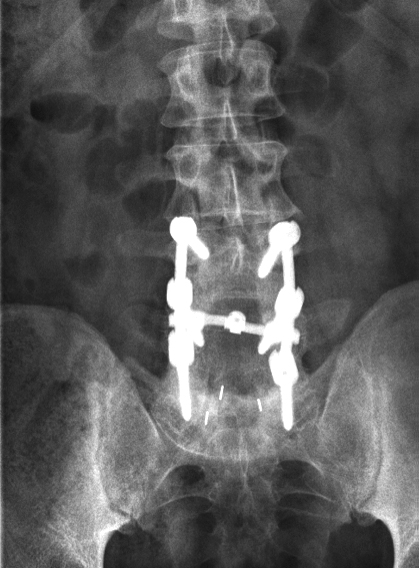We mention often at the Bonati Spine Institute that fusions fail over 50% of the time. Because of this we recommend avoiding fusions if at all possible. Below is an example of one study explaining why a patient may want to think twice when considering a fusion procedure. The study was published in the European Spine Journal in May 2016.
This retrospective study analyzes long-term outcomes (15 years) of circumferential lumbar fusion (CF) for degenerative spine disease using instrumented PLIF. The occurrence of adjacent segment degeneration (ASD) and the reintervention rate was specially focused. A series of 73 patients who underwent CF (1–3 levels) was reviewed. Patients were evaluated preoperatively, at 2, 5, 10 and 15 years after surgery with static and dynamic radiographic studies, CT scan and MRI. Patients completed also the ODI*, the VAS score, and the patient self-satisfaction questionnaire. Results:
- At 2-year follow-up, there was a decrease in the average ODI score (from 72.3 ± 16.4 preop to 30.5 ± 6.2).
- At 10- and 15-year follow-up, ODI scores return to preoperative scores in patients without revision surgery. The 82.8 % of patients referred an excellent and good self-satisfaction rate at this time.
- At 5-year follow-up, seven patients (9.6 %) required reoperation because of symptomatic ASD.
- At 10-year follow-up, reoperated patients increased to 24.6 % (18 cases). Excellent and good self-satisfaction rate decreased to 41.1 % at this time. Radiological ASD was then detected in 37 cases (50.7 %).
- At 15-year follow-up, nine patients were lost and a total of 24 (37.5 %) required a new surgical treatment because of ASD. The occurrence of revision surgery because of symptomatic ASD was highly dependent of the age of patients at the first surgery and the number of fused levels.
In conclusion, circumferential lumbar fusion provides good clinical results at short-term follow-up, but From 2- to 15-year follow-up, outcome worsened significantly. The high rate of ASD occurrence and reintervention questions the reliability of this technique for lumbar fusion.
*The Oswestry Disability Index (ODI) is an index derived from the Oswestry Low Back Pain Questionnaire used by clinicians and researchers to quantify disability for low back pain. It is currently considered by many as the gold standard for measuring degree of disability and estimating quality of life in a person with low back pain.
If you would like to read more about fusion studies, feel free to read another study here: https://www.bonati.com/blog/case-against-fusion-1/ and here: https://www.bonati.com/blog/case-fusion-2/.
If you’re seeking treatment for chronic neck or back pain and have been recommended a fusion, allow our surgeons to review your case before making any final decisions. The patented Bonati Spine Procedures are a proven alternative to fusions, having performed 70,000 procedures with a 98.75% patient satisfaction rating. To get your review process started, complete our MRI review form.

